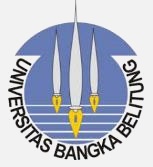Women Empowerment in Blackpink’s The Happiest Girl: A Critical Discourse Analysis
Abstract
This study tries to illuminate the significance of female empowerment in Blackpink's song The Happiest Girl. The Born Pink Album by The Happiest Girl in Blackpink was used as the source of the analysis's data. This study's goals are to: (1) define the textual elements of song lyrics; (2) identify discursive devices in song lyrics; and (3) identify social elements in song lyrics. In order to address the issues in this research, this qualitative study applies Norman Fairclough's (2001) theory to a three-dimensional model that is also supported by other theories. The research's findings are reflected in the text's framework, which depicts women who possess the capacity to empower themselves via independence and self-assurance in their decision-making. The producer's experience and social issues play a major role in the creation of songs in the discourse practice dimension of the creative process. Fans can accept the song well during the listening process because of how it is structured as something that is both enjoyable and relevant to life. Sociocultural behaviors that perpetuate gender stereotypes allow the music business to be more fearless in creating songs that elevate the importance of women's empowerment.
Downloads
References
Aprilia, F., & Neisya. (2022). Women’s Stereotypes in “Pretty Girl” Song Lyrics: A Critical Discourse Analysis Study. ENGLISH FRANCA: Academic Journal of English Language and Education, Vol. 6, No. 2, 2022, 488-502.
Arbain, & Sandi, M. T. (2016, April). Critical Discourse Analysis of Eminem’s “Love the Way You Lie Part II”. Script Journal, Volume Issue 1-10.
Fairclough, N. (1995). Critical discourse analysis: the critical study of language. Singapore: Longman Singapore Publishers (Pte) Ltd. .
Fairclough, N. (2001). Language and Power (2nd Edition ed.). London. FAIRCLOUGH, N. (2010). Critical Discourse Analysis The Critical Study of Language Second edition NORMAN FAIRCLOUGH. Routledge
Ika Trisnantasari, M. P. (n.d.). A SEMANTIC ANALYSIS ON ED SHEERAN SONGS. Journal Unigres, 1-9.
Kayany, U., & Dar, S. R. (2019). Sustenance of Patriarchal Ideology: A Feminist Critical Discourse Analysis of Musical Discourse. Erevna: Journal of Linguistics & Literature, Volume 3 Issue 2, 57-70.
Kurniawati, N. (2021). Representation of Black Women Power in Beyoncé Knowless’s “Run the World (Girls)”. E-Structural, Vol 4 No 68-79.
Liando, N. V., Olii, S., & Andries, F. (2022). Critical Discourse Analysis in the “What a Wonderful World” Song Lyrics by Louis Armstrong. JELTEC: Journal of English Language Teaching, Literature and Culture, Volume1 , No 2(E-ISSN: 2963-3842), 141-147.
Pasisingi, W., Mariana, A., & Husain, D. (2022). A Semantic Analysis on Maroon 5 Songs. JELTIS: Journal of English Language Teaching, Linguistics and Literature Studies, Volume 2. Number 231-243.
Rahimi, F., & Riasati, M. J. (2011). Critical Discourse Analysis: Scrutinizing Ideologically-Driven Discourses. International Journal of Humanities and Social Science, Vol. 1 No. 16; November 2011, 107-112.
Ruanglertsilp, E. (2022). Discourse of Self-Empowerment in Ariana Grande’s ‘thank u, next’ Album Lyrics: A Critical Discourse Analysis. Volume 26, 2022 - Issue 2, 200-220.
Tariq, S., Khaleel, B., & Qazalbash, F. (2021). A Critical Discourse Analysis of Representation of Women in Selected South Asian Songs. Volume Issue 2.
Copyright (c) 2023 Owned by the Author(s), published by Berumpun: International Journal of Social, Politics and Humanities

This work is licensed under a Creative Commons Attribution 4.0 International License.










